Cod Hole campground and picnic area
Nymboi-Binderay National Park
Learn more
Learn more about why this park is special
Cod Hole campground and picnic area is in Nymboi-Binderay National Park. Here are just some of the reasons why this park is special:
Ancient connections
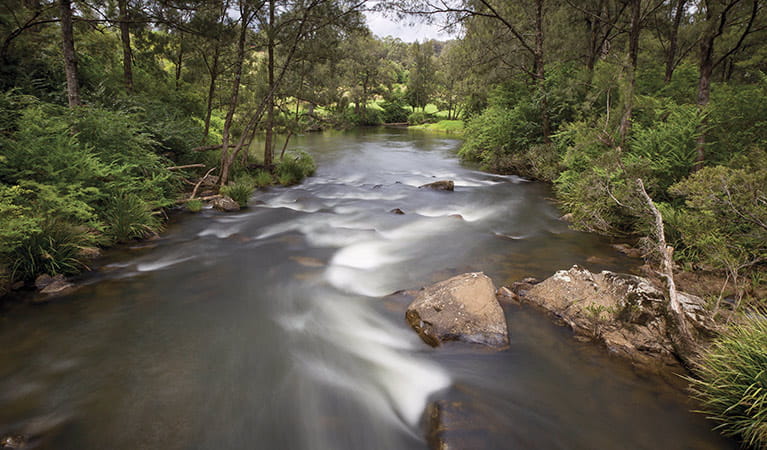
Nymboi-Binderay National Park is the traditional Country of the Gumbaynggirr People and their ancient connection to this land is evident throughout the park. The park's landscape provided a rich source of food, medicine and shelter for Aboriginal people and features strongly in cultural knowledge and Dreaming stories. As you travel through this park, take some time to think about the people who lived here and their strong attachment to this ancient landscape and all it contains.
Animal kingdom
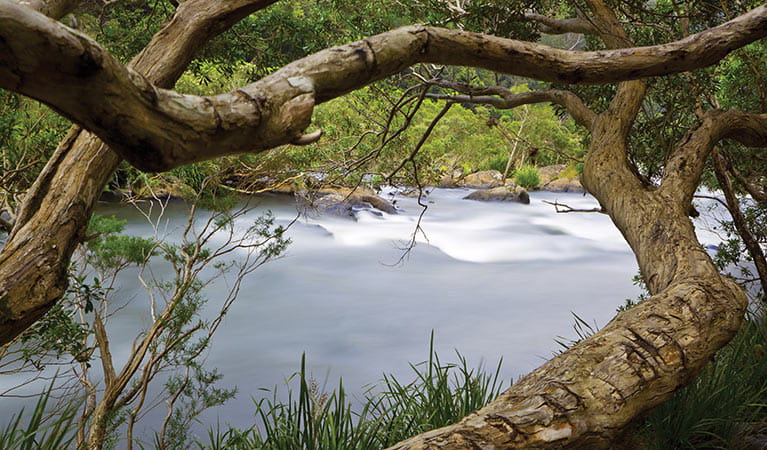
Nymboi-Binderlay has a diverse range of animals, including 68 types of mammal, 25 kinds of amphibian, 33 sorts of reptile and over 120 bird species; of these, at least 15 species are threatened. When you’re picnicking, camping or walking through the tallowwood and coachwood rainforests, be sure to keep your eyes open for the many native animals which call this place home.
- Moonpar Forest drive Moonpar Forest drive is a 75km scenic car touring route near Dorrigo. It’s a great day out and an ideal way to explore the walks, riverside picnic spots, and sights of Nymboi-Binderay and Cascade nati...
- Norman Jolly picnic area Enjoy a picnic among tall old-growth trees and historic logging relics at Norman Jolly picnic area in Nymboi-Binderay National Park, not far from Dorrigo.
Waterworld
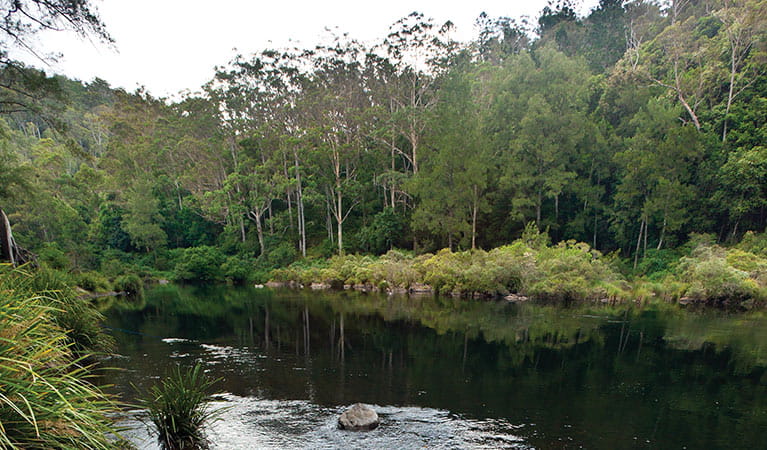
The Nymbodia River is a true highlight of Nymboi-Binderay National Park. The name of the park comes from Aboriginal language of the local Gumbaynggirr People; 'Nymboi' being their name for the river, and 'Binderay' meaning river. Rafting down the Nymboi River with an expert guide is an exhilarating experience and a fantastic way to take in the park's landscape.
- Coachwood loop track The Coachwood loop track is a short and easy walk that starts and finishes at the Norman Jolly picnic area in Nymboi-Binderay National Park.
- Moonpar Forest drive Moonpar Forest drive is a 75km scenic car touring route near Dorrigo. It’s a great day out and an ideal way to explore the walks, riverside picnic spots, and sights of Nymboi-Binderay and Cascade nati...
Plants and animals protected in this park
Animals
-
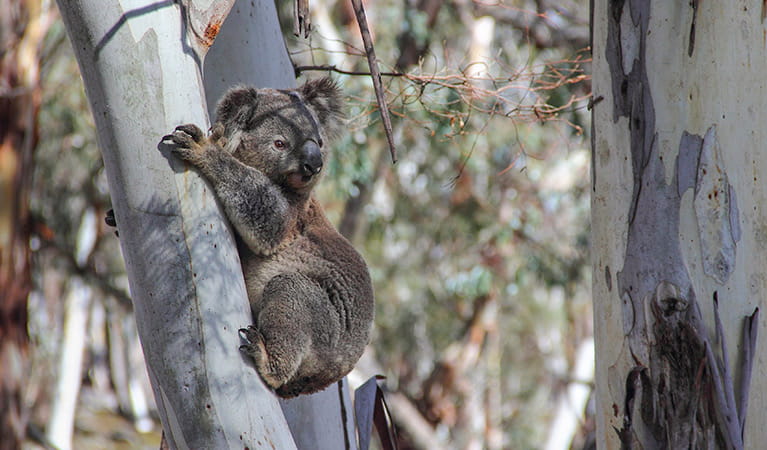
Koala (Phascolarctos cinereus)
One of the most renowned Australian animals, the tree-dwelling marsupial koala can be found in gum tree forests and woodlands across eastern NSW, Victoria and Queensland, as well as in isolated regions in South Australia. With a vice-like grip, this perhaps most iconic but endangered Australian animal lives in tall eucalypts within a home range of several hectares.
-

Superb lyrebird (Menura novaehollandiae)
With a complex mimicking call and an elaborate courtship dance to match, the superb lyrebird is one of the most spectacular Australian animals. A bird watching must-see, the superb lyrebird can be found in rainforests and wet woodlands across eastern NSW and Victoria.
-

Southern boobook (Ninox novaeseelandiae)
The southern boobook, also known as the mopoke, is the smallest and most common native owl in Australia. With a musical 'boo-book' call that echoes through forests and woodlands, the southern boobook is a great one to look out for while bird watching.
Plants
-
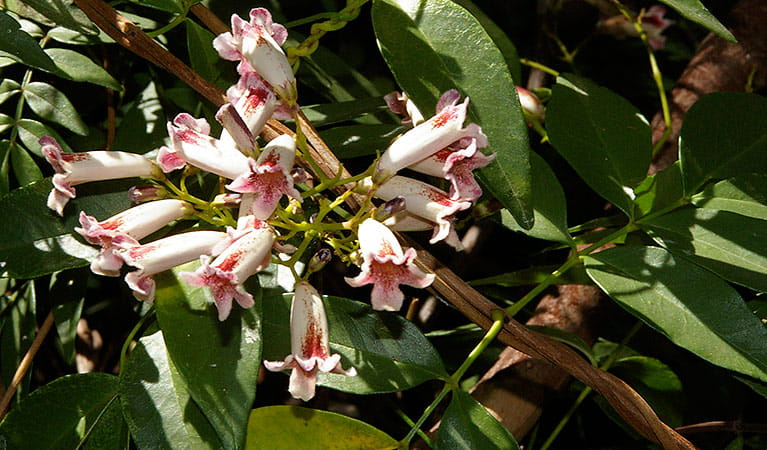
Wonga wonga vine (Pandorea pandorana)
The wonga wonga vine is a widespread vigorous climber usually found along eastern Australia. A variation of the plant occurs in the central desert, where it resembles a sprawling shrub. One of the more common Australian native plants, the wonga wonga vine produces bell-shaped white or yellow flowers in the spring, followed by a large oblong-shaped seed pod.
-
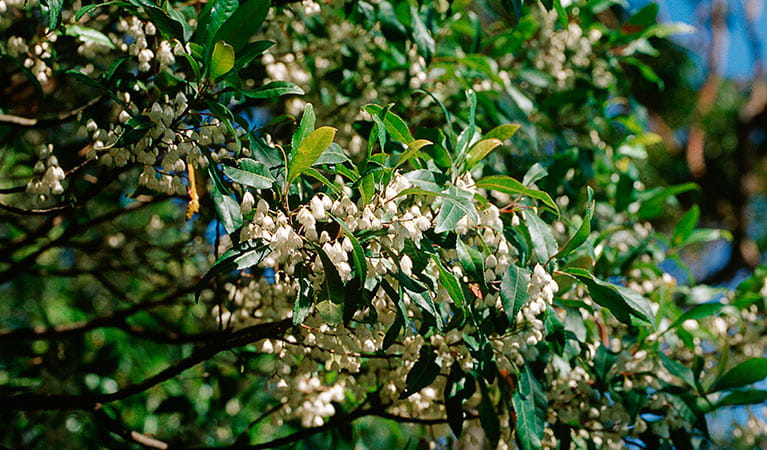
Blueberry ash (Elaeocarpus reticulatus)
The blueberry ash is a rainforest shrub which produces blue olive-shaped berries and spectacular bell-shaped flowers, which often appear on the plant together. It is a tall slender shrub or small tree found in rainforest, tall eucalypt forest and coastal bushland in eastern NSW, south-east Queensland and Victoria.
Look out for...
Superb lyrebird
Menura novaehollandiae
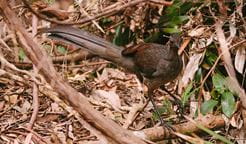
With a complex mimicking call and an elaborate courtship dance to match, the superb lyrebird is one of the most spectacular Australian animals. A bird watching must-see, the superb lyrebird can be found in rainforests and wet woodlands across eastern NSW and Victoria.